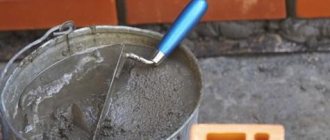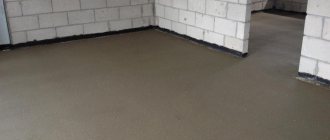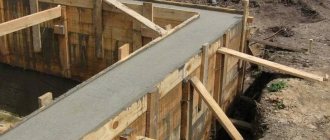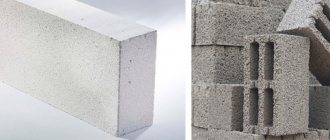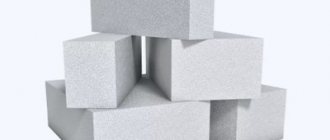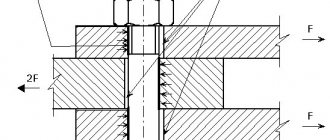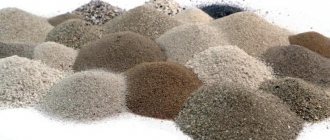Characteristics and properties
To display the parameters of the material, a marking consisting of the letter “D” and a numerical indicator is used. The presence of additives is determined by their percentage by weight. Thanks to additional components, the composition acquires qualities useful for construction, among which are resistance to corrosion, the influence of low temperatures and moisture.
According to the established State Standard, there is no difference in markings. The name is deciphered in the order of writing the abbreviations, which characterize the following parameters:
- PC - Portland cement;
- numbers 300, 400, 500 - compressive strength;
- D - additives.
Information about the special properties of the material is indicated in letters. The presence of the letters PL in the marking indicates plasticizing parameters, N - normalized clinker, B - rapid hardening, and GF - hydrophobicity of the material.
Cement D0 consists of 100% clinker obtained by firing limestone and clay at a temperature of +1450ºC. After grinding the material, it is sieved, gypsum is added, the permissible rate of which in the composition should not exceed 1%. Cement without additives is characterized by high strength and hardening speed.
The modification marked D20 is manufactured in stages and is a homogeneous mass of clinker into which components are added. Their presence does not exceed 20% and affects the properties of the building material.
Portland cement M500 D20, 50kg
Product description and characteristics
Portland cement
is an indispensable material in the construction of houses and other structures. Thanks to modern technologies, today there are a huge variety of types of goods that differ in their composition. Because of its positive qualities, it is very popular in the manufacture of foundations and other buildings that are located in an aggressive environment.
Portland cement m500
is a powdery material based on inorganic substances.
When interacting with water, a dough-like mass is formed, which after a certain time hardens into solid concrete. Portland cement,
in turn, is produced by finely grinding clinker, to which a small amount of gypsum is added. The basis of clinker is limestone with the addition of clay. This mixture is baked until completely sintered at high temperature.
The history of Portland cement
Portland cement m500
known to mankind for more than 100 years.
Its appearance is associated with the mason D. Aspdin and the military technician E. Cheliev. These people began producing Portland cement
at different times, and their production technology also differed. So in 1817, Cheliev produced a binder consisting of limestone and clay, which he brought to complete sintering. This prototype of modern material was actively used to restore Moscow, destroyed by the fire of 1812.
In 1824, the English mason D. Aspdin received a patent for his binder, which was obtained by firing lime with clay. Unlike Cheliev, Aspdin did not bring his mixture to complete baking. P ortland cement
got its name due to the great similarity in color with the stones near the city of the same name.
Types of Portland cement and their areas of application
Despite the fact that the basis of Portland cement
is the same everywhere, however, thanks to the introduction of various additives, it was possible to obtain many different variants of the mixture, which have their own area of application. So today the following main varieties of this substance are distinguished:
- non-additive material;
— with the addition of mineral elements;
— Portland cement
rapid hardening;
- especially fast-hardening mixture;
- with the addition of slags.
For example, the designation Portland cement m500
D0 means that this is a dry mixture of grade 500, and d0 means the absence of any additives. It is actively used for the construction of underground and above-ground concrete structures, where there is no aggressive influence of any kind of water.
If we see the marking Portland cement m500
D5 or D20, then we have a substance containing mineral additives, and D5 or D20 shows the percentage of these additives. Additional elements introduced into its composition significantly increase its water resistance, and thermal conductivity also decreases. But at the same time, frost resistance is significantly reduced. This type of product can be used everywhere, except in cases where high frost resistance is required.
Composition of fast-hardening cement Portland M500
differs from the usual one, due to which high strength is obtained at the initial stage of hardening. This allows it to be used in the manufacture of reinforced concrete structures resistant to sub-zero temperatures. When using this material, you should always remember that it is unacceptable to use it in the manufacture of massive structures, since the concrete produced from this material is not sulfate-resistant.
Slag-containing cement Portland m500
differs from the usual content of granulated blast furnace slag from 20 to 80%. It has much lower heat generation, as well as significantly less shrinkage when drying or swelling in water. Due to its positive qualities, it is actively used in the production of products or structures that are significantly exposed to water.
Scope of use
The scope of application of the composition is determined by its strength grade. The higher the indicator of this parameter, the more reliable and durable the structure. When choosing cement D0 and D20, it is recommended to take into account the operating conditions of the facility.
Various indicators are used to characterize the material. The M500 marking indicates that the material is designed for a load of 500 kg/cm²; for M400 the strength parameter is 400 kg/cm².
The powdery mass D0 is characterized by:
- level of frost resistance;
- hardening index;
- ultimate deformation.
The D20 cement grade is characterized by the presence of 20% auxiliary substances, thanks to which the product acquires:
- increased hydrophobicity;
- resistance to environmental influences;
- plasticization.
Additives reduce the cost and affect the properties. Grade M400 D0 is characterized by high resistance to low temperatures, average shrinkage deformation and polymerization rates. The building material of this brand is used for the manufacture of monolithic structures of private and industrial facilities.
Cement M400 D20, which is used for the production of concrete structures, is characterized by average deformation rates. When constructing large industrial structures, M500 D0 cement is used, and for casting monolithic products and finishing, M500 D20 is used.
In addition to technical parameters and areas of use, cement brands differ in price. You can purchase high-quality cement from construction companies in Moscow. Clients have the opportunity to place an order on the website during a personal visit to the office. For feedback, it is recommended to fill out an application that includes your name, phone number and email address.
Cement M500 D0 and D20 - which is better?
Cement M500 D0 and D20, or as it is also called “five hundredth”, is the best offer in its class on the modern building materials market. It is used for masonry and plastering work, so it has a fairly wide range of applications.
This is the creation of concrete structures, beams, floor slabs, pouring foundations, housing, industrial and agricultural construction.
In cement M500 D0 - “D - 0” indicates the absence of additives. Therefore, it quickly sets, hardens and dries. It is characterized by high strength, water and frost resistance, durability, as it consists only of cement clinker. Cement clinker is created by firing in special kilns at a temperature of 1450 degrees, with the following mixture composition: limestone, special quality clay. After which the clinker is crushed, sifted, and crushed gypsum is added as a percentage - no more than one percent of the mass of the original raw material.
M500 D0 cement, due to its high-quality, long-term strength, is used for the construction of bridge structures, airfield pavements, reinforced concrete pipes, railway sleepers, supports and racks of power lines. Very effective when performing restoration and emergency work.
Cement M500 D20 in which the number 500 means that it will withstand a load of 500 kg per square centimeter. Cement M500 D20 is a powdery homogeneous mass - clinker, which is produced in several stages in factories with modern high-tech equipment. Modification of cement with the addition of certain properties is carried out by adding special impurities. The “D20” marking indicates that the cement consists of 80 percent clinker and 20 percent additives. Its price, accordingly, is less than pure “five hundredth” cement M500 D0. And hence such characteristics as strength, hardening speed, water resistance, frost resistance are lower, although compared to the “four hundredth”, a positive difference is obvious!
Cement M500 D0 D20 is packaged in multilayer bags that prevent its contact with the environment. By following the storage rules, the buyer is provided with high quality goods guaranteed by the manufacturer for six months. Therefore, it is very important that purchased bags must be protected from exposure to moisture, vapors and other liquids until they are opened and the solution is prepared.
“Large-caliber” packaging in bags up to one ton is convenient for large construction companies for which small, fifty-kilogram bags are not practical to use.
Cement marking
The construction industry uses various types of powdered components. A powdery binder that, when added to water, forms a plastic body that hardens and retains strength in any environment.
The use of additives improves the quality of the material, increases resistance to moisture, temperature, and corrosion. Current production standards allow the use of excipients.
Considering that the composition leads to differences in hardness and consumer qualities, for the convenience of calculating the need for building materials, markings have been introduced. It is determined by state standards and technical conditions.
Their presence is indicated by the letter “D”, and the number 0 means that D0 cement consists entirely of calcium carbonate and aluminosilicates. In order to regulate the polymerization time, gypsum is added to the composition. Varieties of cement D0 and D20, the difference of which lies in the composition, are obtained due to the content of mineral additives.
Cement D0 and D20: characteristics and scope of application
Home / Tips for selecting products
04/22/2017 Construction materials
Cement of various brands and with different characteristics is available in stores and construction bases in the Zaoksky district. Today we want to draw the attention of buyers to one of the very important characteristics of cement - the ratio of additives in its composition in relation to clinker. When buying cement, rarely does anyone think about this parameter, but the difference between D0 and D20 cement is very significant both in composition and in the area of application.
So, let's try to figure out what the letter “D” means and how it affects the characteristics of cement. To obtain cement with the desired properties, various additives are introduced into its composition. They are designated by the letter “D”, and the number behind the letter means the percentage of additives to the clinker. To display the additional properties of the material, a special abbreviation is used, which is placed after indicating the number of additives as a percentage. If we compare cement D0 and D20, there will be a difference, as we said above, both in composition and in the area of use.
Thanks to additives, cement acquires additional useful qualities, among which are resistance to the following factors:
• exposure to moisture;
• the appearance of corrosion;
• influence of low temperatures.
If we compare cement D0 and D20, then in the first case the material will consist entirely of cement clinker. It is obtained by firing limestone and a special type of clay at a temperature of +1450 °C. Then the material is crushed, sifted and combined with gypsum, the amount of which should not exceed one percent of the mass of the original raw material. Cement without additives is characterized by strength and speed of hardening.
Its modification D20 is produced in stages and represents a homogeneous powdery mass of clinker and certain substances. As a result, cement consists of 80% clinker and 20% additives, the names of which reflect the properties of the material.
The scope of application is determined not only by the composition, but also by the grade of cement in terms of compressive strength. The higher it is, the more reliable the structures and the longer their service life. Therefore, when choosing which cement is better: D0 or D20, you need to take into account the purpose and conditions of use of construction projects. Among the most common are:
• M400 D0. It is characterized by high frost resistance, average shrinkage deformations and hardening rates. It is used for the manufacture of prefabricated and monolithic structures in private construction and the construction of industrial facilities.
• M400 D20: characterized by average shrinkage deformations, frost resistance and hardening rate. Used for the production of various concrete structures.
• M500 D0 is characterized by high frost resistance and strength. Therefore, it is used in the construction of large industrial structures, bridge structures, airfield pavements and during various restoration work.
• M500 D20 has average frost resistance and hardening. Serves as a raw material for casting monolithic products, in private construction and decoration.
In addition to their characteristics, D0 and D20 cements differ in price. Pure material is more expensive than a composition with modifying additives.
You can buy cement in the Zaoksky district at StroyMarket DlyaStroteiteley.rf. Our own fleet of trucks of various carrying capacities will ensure the delivery of cement throughout the Zaoksky district. StroyMarket is open daily, without lunch and without days off, from 8-00 to 20-00.
